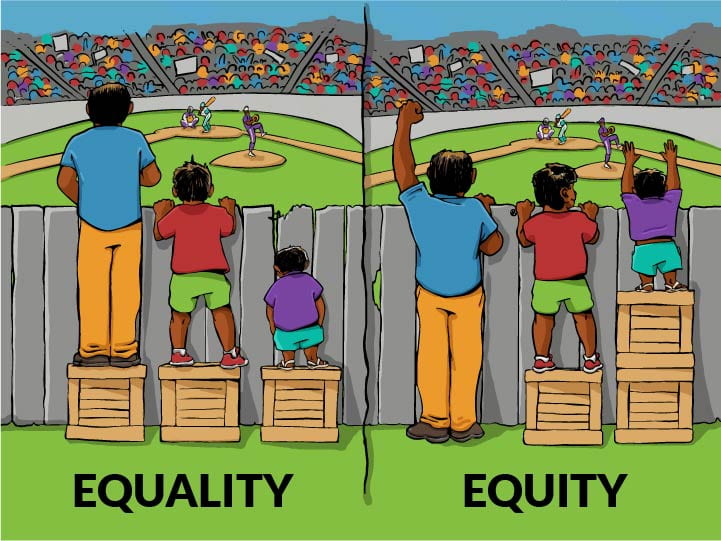Students are struggling to afford the rising cost of attending college, while also not being represented by the materials they are introduced within their courses. Tuition is an expected expense, with the largest cause of these expenses being textbooks and other required materials. These textbooks and required materials have a lot of flaws outside of their incredibly inflated cost, such as becoming outdated quickly, low student demographic representation, and becoming useless after a course has ended. These flaws can be avoided by finding, creating, and curating more inclusive and cost-effective materials.
The Cost of Using Traditional Materials: A Student’s Perspective
Though they are not the only material used by instructors, textbooks are the most common type, and the most expensive. According to a report by Jaggers & Rivera (2019) from the Midwestern Higher Education Compact, textbook prices have increased by almost 190% since 2006 (p.3). Textbooks are expensive for everyone, but it affects minority groups more noticeably, with textbooks accounting for around 80% of their total college expenditures (Jaggers & Rivera, 2019, pg. 2). Consider a student who is seeking an education while also undergoing any sort of sustained medical treatment (gender-affirming care, or even cancer treatment), when the medical bills can be devastatingly expensive. Likewise, any student who comes from a low-income family or who is made to pay for their education, rent, groceries, and other necessities will seek a cheaper option to acquire required texts. That may be through 3rd party rentals, library loans, or even pirating if they are desperate enough.
Another drawback with the use of traditional materials is that they can quickly become outdated. In some fields, such as computer science, medicine, and data analytics, it is possible for the content to already be out of date by the time it is published in the textbook and the required software of learning activities has been developed. This poses a problem not only with the content, but with the practicality of the learning materials used after the course has ended. The same could be said for science related lab kits used by non-science lab majors. Unused items or equipment becomes obsolete once the course has ended since not all science courses use the same materials.
The drawback of focus for this article is the lack of representation within traditional course materials. BIPOC, LGBTQ+, disabled, and/or international students see themselves represented significantly less in these publications, multimedia, and images. For example, a study conducted by Brandle (2020) analyzed American Government textbooks and found that the mention or discussion of historically marginalized groups was infrequent – approximately 0.84% of the total word count (p.738). This gives the impression that communities like the LGBTQ+ community are not widely present within a given field of study. LGBTQ+ students may not see the contributions made by fellow community members, which indirectly discourages them from sharing their perspectives in class.
Making Inclusive Materials: Locate, Create, Curate
Locating Inclusive Materials
There is no need to make all the materials for a course. Instead, to save time, take advantage of Open Educational Resources. Open Educational Resources (OER) are educational materials created and licensed to be free to access, share, and modify. They can be useful supplements that expand a discussion by providing new perspectives. OER that instructors can use include academic blogs, journal articles, videos, podcasts, PowerPoint slides, learning activities, handouts, and even textbooks. They may even find useful perspectives in non-academic (but still relevant) blogs, books, videos, and podcasts. Using a mix of both will provide students with the academically focused material they are used to, as well as a more casual “real life” perspective that is grounded in a practical setting outside of the classroom. Merlot is a good starting resource to locate various types of OER.
Creating Inclusive Materials
If an instructor cannot find materials that suit their course’s needs, they can create materials that will benefit their course. This has the added benefit of allowing them total control in customizing it to fit exactly what they want their students to focus on. Instructors can use the H5P software to create textbooks and other learning resources for a course. By creating course materials, instructors can provide images, and language that support a wide variety of students.
Curating Inclusive Materials
An instructor should ask what they want students to take away from their course overall and choose what textbook and learning materials are best suited for achieving that. Another element to curating material is updating the course so that it uses the current language and offers recent examples where applicable. Once faculty have created their own learning materials, they are free to make changes more quickly than a publisher would.
Inclusive materials can benefit every student in several different ways. More specifically, they especially benefit BIPOC, LGBTQ+, disabled, and international students who may struggle to afford the increasingly expensive materials that neither represent them nor remain relevant after the semester ends. Instructor created inclusive learning materials allow for full control over its focus, cost, and content.
The cost of college and DEI (diversity, equity, and inclusion) has been a hot-button topic for years. There are ways that faculty can play a small role in the improvement of both for their students. If you are interested in not only creating but providing free and more inclusive learning materials in your courses, please reach out to us via email or through Bookings. We can provide the proper guides, websites, and other resources to assist with these tasks.
Additional Reading:
For more information on any of the following topics, please check out our previous blog articles.
- Adding Accessibility to Learning Materials
- Creating Accessible Content for Equity and Inclusion
- Unlocking Affordable Learning: Exploring Low-Cost and Open Educational Resources (OER) for Courses
- Promoting Equity and Belonging in Online STEM: Strategies for Culturally Responsive Practices
References:
Brandle, S. (2020). It’s (not) in the reading: American government textbooks’ limited representation of historically marginalized groups. Cambridge University Press. https://www.cambridge.org/core/journals/ps-political-science-and-politics/article/its-not-in-the-reading-american-government-textbooks-limited-representation-of-historically-marginalized-groups/61860A5FBECD138C110E277079687E61
GLSEN. (2019). Developing LGBTQ-inclusive classroom resources. GLSEN.org. https://www.glsen.org/sites/default/files/2019-11/GLSEN_LGBTQ_Inclusive_Curriculum_Resource_2019_0.pdf
Jaggers, S. & Rivera, M. (2019). College textbook affordability: Landscape, evidence, and policy directions. Midwestern Higher Education Compact. https://www.mhec.org/sites/default/files/resources/mhec_affordability_series10.pdf
Krukau, Y. (2021). Professor with his students [Photograph]. Pexels. https://www.pexels.com/photo/professor-with-his-students-8197544/
Rouder, C. (2021). Seven ways you can foster a more inclusive LGBTQIA+ learning environment. Faculty Focus. https://www.facultyfocus.com/articles/equality-inclusion-and-diversity/seven-ways-you-can-foster-a-more-inclusive-lgbtqia-learning-environment/
CJ Laudenbach is a student of the Strategic Media Communications program at St. Cloud State University. They are a published journalist and creative for various central Minnesota publications. In their free time, they enjoy scriptwriting and media analysis.




